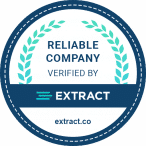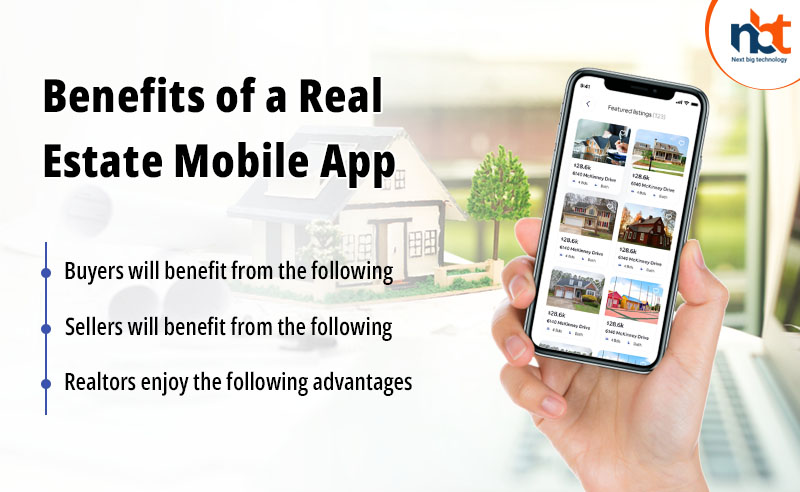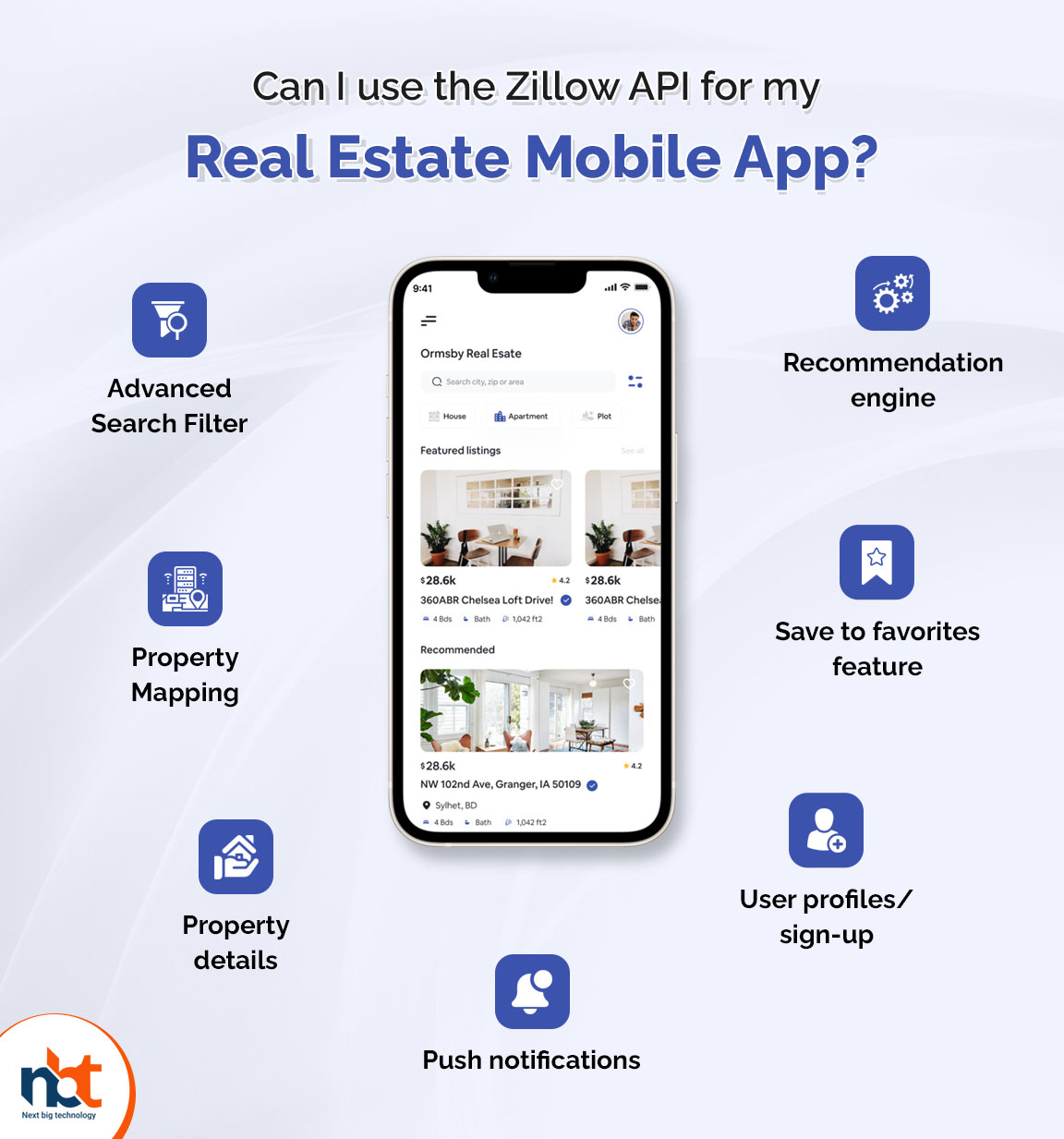If you want to build a real estate app, you should be familiar with the development of popular real estate apps such as Zillow and Trulia. The reasons why the Zillow and Trulia applications have received millions of downloads are discussed in this article. You’ll also learn about the technology stack required to develop the functionality in these apps, as well as how much it will cost.
Real estate market statics
As reported by the Association Of realtors, above 90 percent of homebuyers use the internet to find their dream home. In order to be successful as a real estate company, you must have a website, a YouTube channel, and/or a social media company profile.
These figures from the National Association of Realtors further demonstrate that a mobile app may be an extremely effective marketing tool:
- Three out of every four homebuyers discover their dream houses through the use of mobile devices.
- 62 percent of homebuyers regard mobile search to be a beneficial source of information when making a purchase decision.
- Smartphones are used by 20% of homebuyers to locate their real estate agent.
You can also stay on top of digital trends in the real estate sector and stay one step ahead of your competitors if you use a mobile app. You can, for example, do the following:
- Make use of big data technology to assist your users in comparing properties based on a large number of parameters and selecting the best alternative. Big data algorithms can offer you predictions of the types of properties that your clients are looking for, based on their preferences. Zillow’s key feature, Zestimate, provides real-time access to property prices based on big data in milliseconds.
- Include an artificial intelligence (AI) algorithm in your application. The usage of artificial intelligence-powered tools allows you to save users’ preferences, tailor in-app warnings, and provide targeted push notifications. Trulia increased client demand for its listings by applying artificial intelligence technology.
- 360-degree virtual tours should be included. According to the National Association of Realtors, purchasers frequently take virtual tours of properties after researching them online. These tours provide prospective homebuyers with an understanding of one of the most significant financial investments of their lives. Since its launch in 2019, the Zillow 3D Home feature has made the process of purchasing a home more smooth for users.
Large real estate marketplaces such as Zillow and Trulia believe their mobile applications to be advantageous. Check the advantages of creating your own real estate mobile app and how it can help you.
Also read : What Are the Cost & Features Needed to Develop an App Like Zillow Clone?
Table of Contents
Benefits of a real estate mobile app
Who are the people who use your app? Buyers, sellers, and realtors are the most common types of users of a real estate mobile app, according to industry standards. Each will reap the benefits of your real estate mobile app in their own way.
Buyers will benefit from the following:
- Having access to up-to-date information at all time is important.
- Saving time by comparing houses online rather than driving to them
- Search for properties using a range of filters.
- Contacting an agent is simple, and you can obtain help at any time of day or night.
- Guidance on purchasing and signing of documents
Sellers will benefit from the following:
- The ability to double-check pricing is quite useful.
- Market reach has been expanded.
- Can display qualities in their optimum light
- Property sales are accelerated as a result of this.
- Selling and document signing guidelines are provided.
Realtors enjoy the following advantages:
- While on the road, you can access comprehensive property information.
- Routine chores are becoming automated.
- Expanded market reach as well as the capacity to keep leads
- Added income generating potential
- Increased consumer awareness of the brand
Do you believe that you must clone the Zillow digs app in order to reap all of its benefits? Reconsider your position. Every effective mobile application contains a plethora of data-driven decisions made behind the scenes. Zillow’s development team was tasked with a variety of tasks, including market research, niche selection, selecting a development process, developing a marketing strategy, and much more.
Why Zillow is so popular?
Zillow’s app is the finest, regardless of whether you’re looking to buy, sell, rent, invest, or estimate a home. A number of impressive statistics are available in Zillow’s marketplace:
- Millions of unique visitors per month
- Zillow has listings for eight out of every ten houses in the United States.
- Smartphone users view 186 houses per second on Zillow, according to the company.
Because of its user-friendly layout, well-targeted functionality, and broad range of services, Zillow has gained widespread popularity. When you launch the Zillow app, you are welcomed into a real estate business community that allows you to do the following things:
- Locate a property on a map or by typing its address into a search field.
- See more information about it (photos, 3D videos, cost, number of rooms, build date, rental rate, and so on)
- Using a variety of filters, find a desirable house to buy.
- List your home for sale and make it widely known.
- Rent an apartment or a house in a specific neighborhood, or lease your own.
- Calculate mortgage rates, home prices, rental expenses, refinancing, and amortization using a variety of calculators available online.
- Consult with any real estate specialist that you may require (builders, home inspectors, landlords, property managers, and agents)
- Through the app, you may gain access to Zillow-owned properties and tour them without the need for an agent.
- Share your favorite features of your home with your partner or roommates by tagging them.
- You can use this space to advertise your services as a real estate broker, agent, or loan officer.
For more information on how to create a custom real estate app solution, you could look into how the Zillow app operates.
How does Zillow make money?
In 2020, the Zillow Group (which includes Trulia) expects to generate $3.9 billion in revenues. In contrast, Zillow allows you to market your property for rent or sale for no charge. So, how does Zillow generate revenue?
It is entirely based on advertisements that Zillow generates its revenue:
- Advertisements for property management firms that are paid for.
- Premium services for real estate agents are available for a fee.
- Advertising for mortgage lenders and other organizations interested in reaching Zillow’s audience through paid adverts
You can follow in the footsteps of Zillow or experiment with different revenue streams. You may, for example, experiment with the freemium monetization strategy. It operates by providing users with free access to basic functions while charging them for premium content.
How to build a real estate app like Zillow?
Modern mobile apps for real estate brokers encompass a wide range of capabilities and necessitate a significant investment of both time and money in their development. It makes sense to construct a minimum viable product (MVP) in order to verify your app idea fast and at a minimal cost (MVP). Choose a few main app features, create a minimum viable product (MVP) for your real estate app, and then perform a large number of tests. The findings will inform you whether you should tweak your MVP a little bit, add some new features, or start over from the beginning with your design.
How do you determine which features you should include in your app in order to make it marketable while remaining within your budget constraints?
The most straightforward method is to copy the five fundamental services that Zillow and Trulia supply to their users.
Large database
In the event that you are a real estate agent, people in your area might engage you to assist them in the sale of their homes. It follows that you will create your own database of homes for sale in your local area. For those who don’t have their own database or wish to grow the one they already have, it is necessary to obtain information from third-party sources in order to succeed. If you’re a real estate agent in the United States or Canada, getting listing data from Zillow will be beneficial to you. If you aren’t, we’ve highlighted numerous different sources of property listings that are applicable to any region, in addition to Zillow’s methods of obtaining property listings.
How Zillow Gathered All Data?
Multiple listing services (MLSs), listing syndication platforms, brokers, agents, landlords, and homeowners are among the sources of information used by Zillow to publish 110 million US property listings on its web platform.
Multiple listing services
In the real estate industry, a multiple listing service (MLS) is a database designed to control the process of exchanging and selling property between participants (licensed brokers and agents).
Brokers, agents, and technical partners must perform the following five procedures in order to have their property listings included in multiple listing service databases:
- Be members of the National Association of Realtors (NAR) and follow the standards of the Multiple Listing Service (MLS).
- Make sure to obtain formal permission from homeowners before adding their properties to multiple listing agencies.
- Pay a commission to list properties for sale in multiple listing service (MLS) databases.
- Follow the policies of the Internet Data Exchange (IDX). Real estate players use IDX to trace the movement of data from an MLS database to their website or mobile app. IDX is comprised of a set of rules, standards, and technology that they follow.
- To obtain customizable data from MLS web portals, real estate APIs such as the RESO Web API standard, the SimplyRETS API, the ATTOM Property API, or the Mashvisor API should be used in conjunction with them.
When you consider that the United States real estate market will have nearly 600 multiple listing services by 2020, establishing arrangements with MLSs can become a time-consuming and expensive endeavour. In light of this, the Zillow Group has devised three alternate methods of obtaining up-to-date property information.
Platforms for listing and syndication
Real estate businesses in your nation may be willing to partner with you in order to integrate their property listing data straight into your real estate app.
Zillow and Trulia signed into data-sharing agreements with ListHub, one of the largest real estate listing syndication systems in the United States, when they were in their early stages.
Following the expiration of the agreement, Zillow and Trulia began collaborating with 40 additional providers and hosting more property listings than they had ever done before.
Brokers, brokers, and landlords
You can allow landlords, agents, and brokers to list their property listings in your real estate app if you have the appropriate permissions.
Make it easy for them to do, using tools that will allow them to manage their property listings and efficiently promote their services all in one spot.
Agents can build free profiles on Zillow, which allows them to collect ratings from previous clients and advertise their listings.
Alternatively, agents can choose to participate in the Premier Agent advertising model, in which they pay a fee for the right to display their contact information next to active listings in specific zip code areas.
Zillow has developed a real estate app for landlords called Zillow Rental management, which allows landlords to do the following:
- Rental properties listed.
- Verification of tenants is accomplished through online rental applications.
- Create lease agreements for rental properties.
- Lease agreements can now be signed electronically.
- Rent payments can be sent directly to their bank accounts.
Property owners
According to research conducted by Zillow, one-third of sellers attempt to sell their real estate holdings on their own. For Sale By Owner listings are available on Zillow to meet the needs of this sort of user. Zillow’s Make Me Move listings are another alternative for homeowners. These ads allow homeowners to gauge interest from potential buyers and receive surprise offers. If you encourage for-sale-by-owners to list their properties on your real estate mobile app, you’ll be able to create your own lucrative supply of property listings.
Also read: What Are the Cost & Features of Trulia Clone App? Know Here!
Can I use the Zillow API for my real estate mobile app?
As a real estate agent, you must continually examine properties, assisting sellers with selling homes and buyers with financing homes, among other things. The integration of APIs from Zillow into your real estate app appears to be a logical step in order to keep track of current real estate property values. However, according to the terms of service for the Zillow API, you can only do so for a website and not for a mobile application.
Advanced Search Filter
While it is convenient to narrow listings by price and location, if your goal is to create a real estate app similar to Zillow, you will need to expand the range of filters available. Additionally, consider allowing users to save their favorite search filters. You’ll be able to alert users of new listings that match their search criteria in this manner.
Users may search for a dream home on Zillow by utilizing the following filters: price range, square footage, and neighborhood.
- Location
- Price ranges
- The number of bedrooms and bathrooms
- Type of residence (house, townhouse, multi-family, condo/co-op, lot/land, apartment, prefabricated home, or other)
- Fees charged by a homeowner’s association.
- Area (in square feet)
- Lot size
- Construction year
- Parking space
- The total number of stories
- Tours are available (open house, 3D tours)
- Other amenities (air conditioning, a pool, a waterfront location)
- Take a look at (city, mountain, park, water)
- Days on Zillow
- Keywords
Filtered search can be implemented in your custom real estate app by using the following methods:
- CoreLocation is used to track the geolocation of a user.
- In order to obtain a list of saved properties, CoreData or Realm must be used.
- Elasticsearch is a search engine that is customizable, fluid, and speedy, and it can be used for any number of criteria.
When dealing with a wide range of search criteria and user types, it’s vital to determine which types of filters your target users are most likely to require (maybe they wish to sort homes by agent). We recommend that you include analytics into your real estate app prototype and analyze input from beta testers and early adopters in order to accomplish this goal.
Property Mapping
By selecting a location on the map in the Zillow app, you may get property details. Using the draw feature, you can draw a circle around an area on the map that you’re interested in and receive information about all of the properties inside the circled area. Zillow provides detailed neighborhood information, such as the following:
- Median Zestimate of the properties in the surrounding area
- Predictions for home values over the next 12 months foreclosure rate
- The availability of neighboring public and private schools, as well as their closeness to the property, are important considerations.
The Trulia app has 34 neighborhood map overlays that provide users with additional information on living in a particular community, such as:
- Property costs, such as property taxes, mortgage payments, home insurance, and other connected fees, are paid on a monthly basis.
- Crime rates are on the rise.
- Schools, stores, and restaurants in the area that have received positive reviews
- Natural disasters have a high probability of occurring.
- Demographics of the local population (median age, family status, education, and more)
- Intensity of traffic
- Perceptions of the surrounding community
Another feature that distinguishes Trulia from Zillow is the use of heatmaps in the search results. Trulia uses this to display multiple data points on a map using colors rather than markers, which is more visually appealing.
In order to give your customers comprehensive information on the areas they explore, how do you create a real estate application similar to Zillow or Trulia? Third-party APIs should be used for the following reasons:
- GeoNames is a free database comprising over 11 million place names, which may be accessed online.
- Custom maps and layers can be created using the MapBox SDK or the Google Maps API.
- Using the Google Places API, you can integrate information about communities from Google Maps to your website.
- Google Maps SDK for Android heatmap utility and Google Maps SDK for iOS developer library for showing map overlays to construct heat maps are both available from Google.
- Use the APIs from Attom Data Solutions, Spatial Neighborhood, and Data.gov in order to gain access to open-source information such as local population demographics, crime statistics, and other data.
More and more countries and towns are building their own open databases to share information with the public. Finding the most appropriate source of information for your app may be less difficult than you think it will be.
Property details
- The most crucial aspect of any real estate mobile app is the information about the properties. They provide users with what they are looking for:
- Photos and videos of the property
- Price and Geographical Location
- Type of a property
- The number of bedrooms and the number of stories
- Size
- Year in which the structure was constructed
- Mortgage repayment schedule on a monthly basis
- owner’s or agent’s biographical information
- Added luxuries (furniture, appliances, flooring, HVAC, basement/garage, and so on) are available.
- Information about how to reach a broker or an agent
Images, graphs, and charts always outperform written descriptions. Both Zillow and Trulia make use of graphs and charts to present information about a property, such as mortgage rates. To incorporate graphical elements into your real estate mobile application, you can choose from a variety of SDKs.
If you want to create an app similar to Zillow, you must concentrate on providing the most visual representation possible for your property listings – this means incorporating 3D panoramic pictures and 3D home tours. A 3D panoramic allows your viewers to virtually walk around the outside of a building before they actually see it. Take a look at our design concept for a real estate smartphone app that allows for 360-degree search:
Using panoramic images taken using a smartphone or 360-degree camera, Zillow’s software creates 3D home tours that can be seen online. You may use a program like EyeSpy360 to accomplish the same thing within your app.
Remember that when you’re developing a mobile application for your real estate agency, agents will be uploading a large number of property photographs at the same time. Let’s say you have up to 100 photos, each of which might be up to 20 MB in size. You should make certain that your app will function properly while users are submitting photographs and videos to it. AWS Lambda, for example, will assist you in hosting the backend functionality for your real estate mobile app.
Additionally, you’ll need a place to store information about properties, users, and updates. You can accomplish this by integrating mobile app databases such as MySQL, PostgreSQL, or Redis.
Push notifications
How can you improve the efficiency of user interactions with your real estate mobile application? By sending customized push notifications to the right people. You must be aware of your users’ tastes in order to tailor your advertisements. In order to gain insight into your target audience, you should use the following app features:
User profiles/sign-up
Users can sign up for this service using their social media accounts or their email addresses, among other methods. Examine which social media platforms your target audience prefers to use. According to the National Association of Realtors, real estate agents, for example, are the most engaged on social media platforms such as Facebook, LinkedIn, and Instagram.
Save to favorites feature
You can allow your users to store properties they like in order to gain a better understanding of what they are looking for. Purchasing or renting a property is not a decision that should be made on the spot, which is why users will appreciate the ability to come back to properties they are interested in and check them again.
Recommendation engine
You can provide personalized suggestions to customers by utilizing machine learning and artificial intelligence (AI) technology. You can display consumers’ properties that are comparable to their preferences or that are most closely match their criteria.
Following the definition of your users’ preferences, you can send appropriate push notifications to them, encouraging them to return to your app. For example, you can send push alerts when the following conditions are met:
- A new property has been posted in the area where they have been looking.
- Price reductions are made on properties that they have rescued or looked at.
- When a saved property listing is updated or altered, the saved property listing is updated or changed.
The market will also have an impact on the scope of your project. If you want to succeed in the American market, you must think outside the box and develop something that is distinct from existing products such as Zillow. Consider the following scenario: you have a real estate app that incorporates augmented reality (AR) technology that allows users to digitally furnish homes in cooperation with expert designers.
In order to develop an Android or iOS real estate mobile application for a market outside of the United States, you can build an app similar to Zillow or Trulia and scale it to fit the needs of your particular country, area, or city
Cost to develop a real estate app like Zillow
Once you’ve made the decision to establish an app similar to Zillow, you need to consider who you will entrust with the application’s development. You should outsource your project development to a third-party software development organization if you are concerned about completing your project on schedule and within your financial budget.
Take a deeper look at how to outsource mobile app development using our tips and tricks.
To create a real estate mobile application, you’ll need a group of experts who specialize in the following areas:
- 1 project manager will be assigned.
- 1 Team Lead
- 1 user interface/user experience (UI/UX) designer
- 1-2 iOS developers are needed (or 1-2 Android developers based on project requirements)
- 1 backend developer is required.
- 1 quality control engineer is required.
Let’s go over the features that your real estate mobile app MVP will have in order to provide you with a more accurate cost estimate. Here’s a rough list of what you should expect:
- Getting Started (from 3 to 5 tutorial screens)
- User authorization (sign-up, log-in, forgotten/reset password) is required.
- Personas de usuario (buyer, owner, agent, admin)
- Methods of payment (in-app purchase by Stripe or PayPal)
- Create and publish properties on your website (description, photos, facilities, cost, etc.)
- Search for homes based on their location and keywords.
- Filtering characteristics
- Properties are arranged in alphabetical order.
- Make a list of your favorite properties.
- Integration with Google Maps
- Make contact with a representative (via phone call or messenger)
- Notifications through push
- Page with property information to be shared
- Administrative panel
The cost of establishing a real estate app for iOS will start at $15,000 and will climb if the app’s features and functionality are added, as well as if an Android app is developed.
Real estate app development: Conclusion
Real estate smartphone apps are extremely convenient, and the demand for them is only expected to grow in the future. The same may be said for the competition. People are still looking for alternatives to Zillow and Trulia, despite their existence on the market. The question then becomes, how can you create a real estate application that will earn its rightful place in this niche? Look for a reputable real estate mobile application development company.
It’s also important to remember that the design of your real estate mobile app should be user-friendly. Apps such as Zillow and Trulia are popular not just because of their enormous property databases, but also because of their straightforward and simple user interfaces. It is not an easy task to strike a balance between these criteria. Although anything is feasible with the appropriate development team, Do you want to see something? Send us a message.
Thanks for reading our post “Develop an App Like Zillow and Trulia-Real Estate App Development”, please connect with us for any further inquiry. We are Next Big Technology, a leading web & Mobile Application Development Company. We build high-quality applications to full fill all your business needs.














